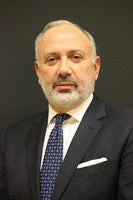
Infrastructure is responsible for 79% of all greenhouse gas emissions and 88% of all adaptation costs according to a recent report by the United Nations Office for Project Services (UNOPS), UN Environment Programme (UNEP), and the University of Oxford. While the share of infrastructure financed by the private sector is small overall, there are countries and sectors where private investment dominates; and where it doesn’t dominate, we see intensifying calls for it to engage more actively. It is without exaggeration that I say, then, that public-private partnerships (PPPs) for infrastructure have an increasingly important role in fighting climate change.
It’s time to stop thinking of PPPs as a tool for public procurement and start thinking of them as a tool for development. This is not a tool that simply integrates value for money (which it should), but a tool that is itself integrated in the Sustainable Development Goals (SDGs) as SDG 17. With this mindset, we can also contemplate smaller-scale PPPs at the local level. We need much more than the occasional PPP project driven by a central authority. Following the example of the World Bank Group’s Scaling Solar initiative, let’s deliver thousands of projects at once. Replicability is key and—raising awareness aside—it’s project-by-project that PPPs will take their rightful role in helping address climate change.
Today there are four hurdles, which we must jump.
First is the instinctive antagonism to PPPs found in many places around the world. Many worry that PPPs are a tool to enrich elites at their expense. A major effort needs to be undertaken to combat this, including awareness campaigns that educate about PPPs; solid examples of successful PPPs that have changed lives; and continued efforts to ensure transparency, fight corruption, and implement best-practice in project design, tendering, and implementation. We must apply environmental, social and governance (ESG) standards without fail. We’ll do this not in name only, not as measurement of risk affecting cashflows (as rating agencies do), but as a responsibility incumbent on us given our commitment to the SDGs.
The second hurdle involves decision makers everywhere, but especially in emerging markets. We simply cannot afford having countries enact PPP legislation, establish PPP units, get their staff CP3P-certified, only to be circumvented. Our PPP community must work hard to raise awareness of best practices among politicians while also insisting that PPP units, not other motives, drive PPP programs.
The third hurdle is the restriction of the PPP field to private for-profit players, instead of actively opening it up to private not-for-profit NGOs. It’s imperative that our PPP community learn from the experience of countries that have brought civil society and philanthropy into the PPP fold. This will not only increase the number of projects, especially climate-related ones, but will also help expand the social support base for PPPs locally.
The fourth hurdle is the current global geopolitical instability that includes rising inflation, high interest rates, and conflict. Faced with an ever-growing need for either new infrastructure or maintaining existing stock, and having contracted very high levels of public debt, governments are now seeking private-sector investment through PPPs more than ever before. The problem is that private sector investors, contemplating the same dire circumstances, are in turn more reluctant to commit financing, especially to projects in emerging markets where risks are often perceived to be higher. This situation requires more engagement by governments and multilateral development banks (MDBs) to give comfort to investors. Governments need to accept more flexible PPP contracts. MDBs may need to lend less and guarantee more. They may even need to adjust their approach to middle-income countries and help them with assistance through grants and concessional financing for funding the additional cost of climate change-related mitigation and adaptation measures.
There is potentially a bright spot ahead, and that’s in the field of technology. We see ever-greater use of more climate-friendly materials for construction and design, blockchain applications such as those for tracking infrastructure use and managing carbon credits—with more platforms coming constantly. The same way that governments improvised PPP projects to deal with the pandemic and deliver vaccines, we should encourage that creativity to focus on climate change solutions.
It takes a long time to design and build infrastructure. Once built, it will hopefully remain for a long time. Then this question is especially important for infrastructure: What future do we want to leave behind for the next generation? How does the daily work of each one of us contribute to creating a better world?
There is no magic wand or global pact that will save the planet for us and for our children. Each one of us must do our part. And if we happen to be members of the PPP community, I will add: “We do this one good PPP project at a time.”
This blog was adapted from the opening address for the WAPPP 2022 Annual Congress. Learn more about the Congress here.
Disclaimer: The content of this blog does not necessarily reflect the views of the World Bank Group, its Board of Executive Directors, staff, or the governments it represents. The World Bank Group does not guarantee the accuracy of the data, findings, or analysis in this post.
Related Posts
Ready to launch: The World Association of PPP Units & PPP Professionals
The developing world is crying out for greater private investment in sustainable infrastructure
A new resource at a pivotal moment: PPP Climate Toolkit for Infrastructure
Leveraging PPPs to tackle climate change – A new resource
Rightly done PPPs can be the right tool for green and resilient infrastructure


Join the Conversation